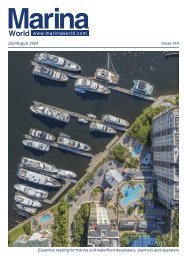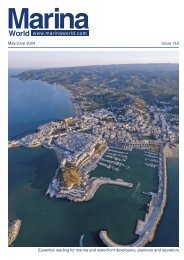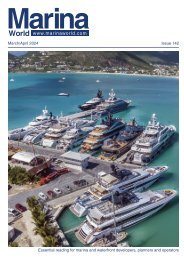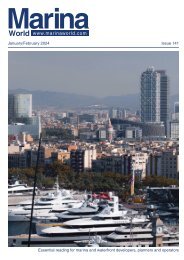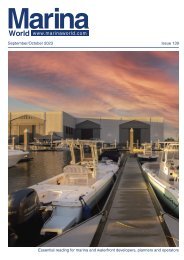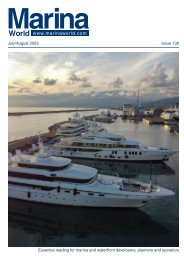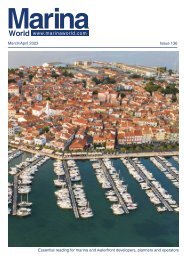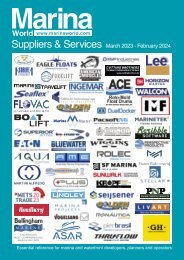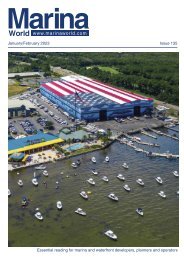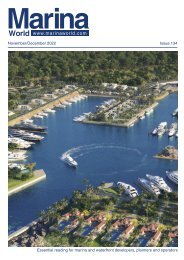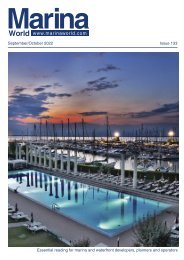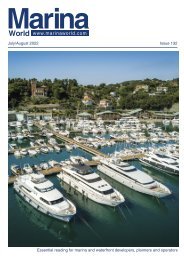2023 May June Marina World
The magazine for the marina industry
The magazine for the marina industry
You also want an ePaper? Increase the reach of your titles
YUMPU automatically turns print PDFs into web optimized ePapers that Google loves.
TALKING SHOP<br />
Developing the<br />
Eagle Float<br />
Long in the forefront of plastic float manufacture, Arkansas-based Hendren<br />
Plastics continues to expand the market reach of its premium Eagle Floats<br />
product line. Jim Hendren, owner and president, talks shop.<br />
Q: How did your business life develop?<br />
A: My dad bought a very small plastics<br />
plant in our home town of Gravette in<br />
1967. I was four years old so I grew<br />
up in the business. He and I started<br />
my current company, Hendren Plastics<br />
Inc. in 1984 as I was graduating from<br />
college. However, I decided to join<br />
the Air Force and see the world. I was<br />
fortunate to get to fly the F-15 Eagle<br />
and that is where the name for “Eagle<br />
Floats” came from. I came back from<br />
active duty in 1992. He and I ran the<br />
company together for a few years<br />
and then I purchased it from him in<br />
2006. We have been making plastic<br />
here for over 30 years now.<br />
Q: When did you first start supplying<br />
plastic floats for the marina industry?<br />
How did the floats change over time?<br />
A: Prior to the encapsulation<br />
requirement, we provided white foam<br />
Eagle Floats support docks, gangways and<br />
fingers at marinas in overseas boating hubs<br />
such as Turks & Caicos (above) and on<br />
home territory in the USA (right).<br />
for the market clear back to the 1960s.<br />
We watched as white foam that had<br />
been in the water for over 25 years<br />
was removed and replaced with Eagle<br />
Floats. The white foam had taken on<br />
a lot of water<br />
but was still<br />
providing<br />
sufficient<br />
buoyancy. It<br />
truly is a great<br />
product for<br />
flotation. After<br />
regulations<br />
required<br />
encapsulation,<br />
we waited<br />
Jim Hendren<br />
a few years<br />
to determine the best method and<br />
technology. We made our first Eagle<br />
Floats in 2008 and are now making<br />
over a thousand a day.<br />
Q: Over the course of your career,<br />
what were the most notable changes/<br />
advances in core materials and plastic<br />
float manufacture?<br />
A: The resin quality has improved<br />
significantly for both polyethylene and<br />
expandable polystyrene. This makes it a<br />
little easier to provide consistently high<br />
quality. We’ve also seen widespread<br />
incorporation of computer devices for<br />
controls and equipment management<br />
that also have greatly improved quality.<br />
Q: You must have invested a lot in<br />
maintaining the best manufacturing<br />
equipment. How has this changed over<br />
time? Do you expect equipment to<br />
develop further? If so, how?<br />
A: When we first began the company<br />
we did not have enough capital to buy<br />
new equipment so we bought mainly<br />
www.marinaworld.com – <strong>May</strong>/<strong>June</strong> <strong>2023</strong><br />
43



